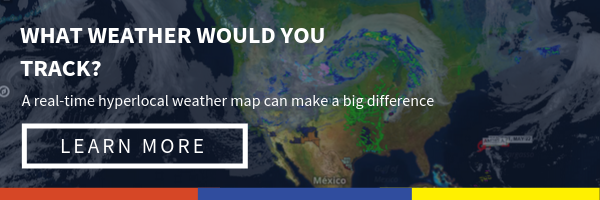6 Ways Communities Can Better Prepare for Flood Season
- Aug 30, 2017
When is Flood Season?

Floods can occur at any time, but typically flooding season is from spring to fall. Early spring can have a high risk of floods as the snow melts and overwhelms streams and ditches. Thunderstorms during the spring and summer months bring heavy rainfall to many areas of the country. Flash floods are very common after a monsoon or hurricane. Frequent tropical storms in the summer and fall can also cause immense coastal flooding.
It’s important to know when flood season occurs in your community so you can be prepared personally and civically.
Flooding is a serious event that can cause fatalities and serious injuries to people who are trapped or swept away by the high waters. Flooding can also:
- Disrupt transportation routes
- Disrupt utility services
- Pollute drinking water supplies
- Cause erosion, damaged roads, bridges, levees, and buildings
- Create landslides or mudslides
- Cause thousands of dollars of damage to homes
6 Ways Your Town Can Prepare for Flooding

Floods can overwhelm communities in just a matter of minutes. By being proactive, your community can reduce flood risks. Here are six ways your town can be prepared:
1. Encourage residents to be prepared for a flood
FEMA has a great brochure that outlines steps each family should take before flood season to stay safe during flooding. This brochure also offers property management ideas for individuals. Every home should know their flood risk and know how to stay informed about flood information.
2. Have an emergency plan that outlines procedures for every department and agency during a flood
Establish a chain of command for management operations. In high-risk areas, it’s a good idea to practice for emergency operations before a real flood occurs. Maintain infrastructure that presents flood risks. Take care of small stream crossing or culverts where floods might be more common. Watch for changes in the course of water in the community.
3. Maintain infrastructure that presents flood risks
Take care of small stream crossing or culverts where floods might be more common. Watch for changes in the course of water in the community.
4. Watch water flow during rainfall, especially on hard surfaces
Roads and parking lots actually speed water flow, which can be quite dangerous. Make sure water can flow into drainage systems adequately without causing damage. Encourage residents to reduce runoff by implementing rain gardens or other green systems.
5. Discourage construction in flood hazard areas…
or at least comply with floodplain development standards. Check flood insurance rate maps before planning any development.
6. Develop a mitigation plan to take steps now to prepare for future floods
One key element of this plan can be a weather tracking system to alert residents to the potential of heavy rainfall and damaging winds to allow them to prepare and get to safer ground.
Flood Preparation is Key
The United States federal government has financial incentives for municipalities which implement flood preparation systems, but the policies must be in line with FEMA guidelines. Towns with programs in place for flood management also can provide incentives to individuals to get reduced flood insurance rates. Many community governments already have programs in place, but these plans and programs must be updated, reviewed and enforced to match FEMA’s updates.
Your community may not be able to prevent floods, but the local government can be prepared for any problems. Accurate weather information is paramount to flood preparation. Your emergency management crews and first responders may benefit from weather tracking systems that send out alerts by email, text, and push notifications to keep everyone up-to-date with accurate information. During an ongoing severe weather event (such as a hurricane lasting multiple days), you may need to call on professional meteorologists for support. A flood might be an overwhelming occurrence, but you can do a lot in advance to keep your community safe.
To learn more about protecting your community from flooding and severe weather, contact us for more information about weather solutions for local government. We can set you up with a system that matches the weather needs of your community and the goals of your government.







